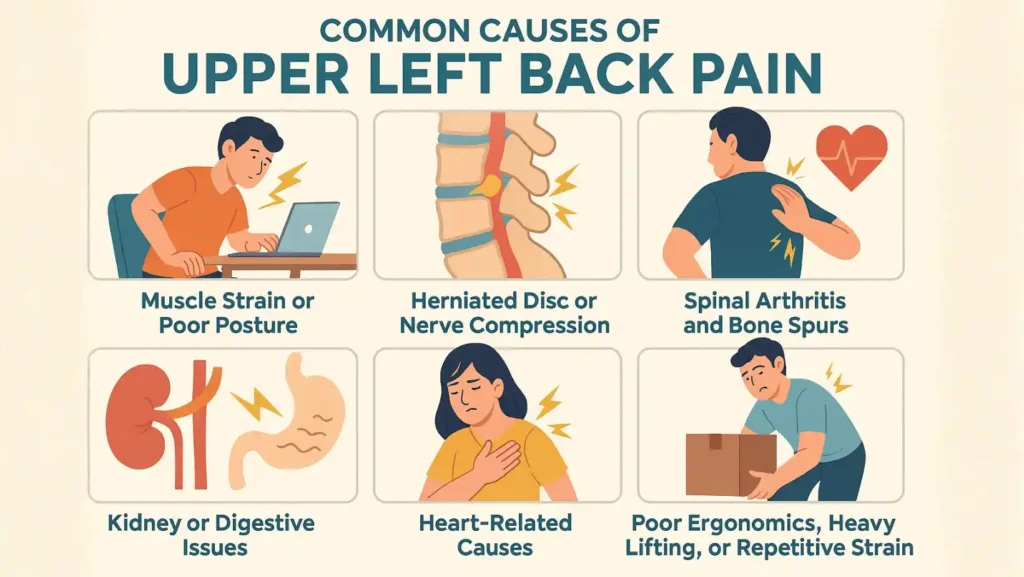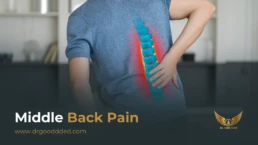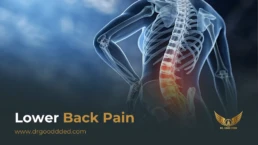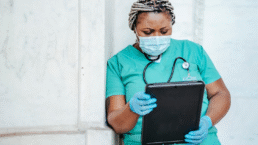Upper left back pain can show up as a dull ache, a burning pull, or a sharp stab near your left shoulder blade or rib area. This pain might be mild for some people and severe for others. The cause can range from something simple, like bad posture, to something serious, like heart or kidney problems.
Table of Contents
ToggleWhat Is Upper Left Back Pain?
Upper left back pain is pain that appears between the base of your neck and the middle of your back, on the left side. It involves muscles, bones, joints, and sometimes even nerves or internal organs.
This pain can feel tight, sharp, throbbing, or dull. You may notice it after sitting too long, lifting something heavy, or even after sleeping in an odd position. It can last a few hours or linger for days or weeks.
Where Exactly Is the Upper Left Back Located?
The upper left back sits below the left shoulder blade and above the lower ribs. This area contains your shoulder muscles, upper spine, ribs, and several nerves that connect to the neck and chest. Pain here can come from the spine, muscles, lungs, or even nearby organs.
People often describe pain in the upper back, left side, as tightness or heaviness around the shoulder blade. Sometimes it spreads to the arm, neck, or chest.
Difference Between Left and Right Side Back Pain
Although both sides share similar muscles and bones, the causes can differ.
| Aspect | Left Side | Right Side |
| Common Area | Under the left shoulder blade or ribs | Under the right shoulder blade or ribs |
| Possible Organs Involved | Heart, spleen, stomach, left kidney | Liver, gallbladder, right kidney |
| Pain Type | Dull or aching; may spread to the chest or arm | Sharp or cramping; may link to digestion |
| Serious Warning Signs | Chest pressure, short breath, jaw pain | Nausea, fever, or yellow skin (liver issues) |
| Common Muscle Causes | Poor posture or shoulder strain | Lifting or twisting injuries |
Common Causes of Upper Left Back Pain
Many conditions can lead to upper left back pain, but these are the most frequent ones:

Muscle Strain or Poor Posture
This is the number one cause. Muscles can stretch or tear from sudden movement, heavy lifting, or sitting for long hours. Slouching while working or looking down at your phone adds pressure on the spine and shoulders, causing pain and stiffness.
If you’re working on a laptop all day, having rounded shoulders can cause pain left side of the upper back that worsens each evening.
Herniated Disc or Nerve Compression
Between the bones of your spine are discs that act as cushions. When one bulges or breaks (a herniated disc), it can press on nearby nerves. This causes sharp, shooting pain that might travel down the arm or chest.
If the nerve gets irritated, you may also feel tingling, weakness, or numbness. Rest and physical therapy often help, but serious cases may need advanced treatment.
Spinal Arthritis and Bone Spurs
As we age, the spine can wear out. Arthritis (joint inflammation) and bone spurs (small bone growths) can develop in the upper spine. These cause stiffness, grinding, and dull pain, especially in the morning or after sitting for a while.
Though not dangerous, these conditions can limit flexibility and movement over time if ignored.
Kidney or Digestive Issues
Sometimes upper back pain on the left side comes from internal organs rather than bones or muscles. Kidney infections or stones can cause deep, steady pain that radiates from the side to the back.
Digestive problems such as gas, acid reflux, or stomach ulcers can also create left upper back pain that feels dull but constant. If your pain comes with nausea, fever, or changes in urination, it’s time to call your doctor.
Heart-Related Causes – When It’s an Emergency
One of the most serious causes of upper left back pain is a heart problem. A heart attack can send pain signals to the left shoulder, jaw, or upper back.
Warning signs include chest pressure, shortness of breath, sweating, or nausea. Women, in particular, often feel pain in the upper left back during heart events rather than classic chest pain. Seek emergency help immediately if this happens.
Poor Ergonomics, Heavy Lifting, or Repetitive Strain
Working long hours at a desk, lifting boxes, or doing the same motion daily can stress the muscles of your upper back. Poor chair support, screen height, or phone posture adds to this strain.
A simple ergonomic fix like aligning your screen at eye level can prevent pain and keep your spine healthy.
When to Worry About Upper Left Back Pain?
Not every ache needs a doctor, but some warning signs shouldn’t be ignored.
Sharp, Radiating Pain to the Shoulder or Arm
Pain spreading from the back to the arm or shoulder can indicate nerve pressure or even heart problems. This type of pain feels electric or shooting.
Pain That Worsens When Breathing or Lying Down
If deep breaths, coughing, or lying flat worsen the pain, it may be linked to the lungs or pleura (the tissue that covers the lungs).
Chest Pressure, Shortness of Breath, or Nausea
If you notice these symptoms along with upper back pain, think heart first. It’s better to get checked and be safe than to ignore early signs of a heart attack.
Persistent Stiffness Despite Rest
If pain and stiffness stay for weeks even after rest or massage, see a healthcare provider. Chronic pain could mean arthritis or spinal issues.
How Doctors Diagnose Upper Left Back Pain
Detailed Physical Examination
Your doctor will ask when the pain started, what movements trigger it, and whether it spreads to other areas. They’ll also check posture, flexibility, and strength to find the source.
Imaging Tests – MRI or CT Scan, Chest X-ray
Scans are not always needed at first. But if pain continues or serious symptoms appear, doctors may order tests.
- X-rays reveal bone changes or alignment issues.
- MRI scans show soft tissues, discs, and nerves.
- CT scans give detailed 3D views of the spine.
- A chest X-ray checks for lung or rib issues.
These tests help identify what’s behind upper left back pain and how severe it is.
Blood and Cardiac Tests If Chest Pain Is Involved
If you have chest or jaw pain, doctors may do ECGs (heart rhythm tests) or blood tests for heart damage markers. These confirm or rule out cardiac causes.
Postural and Ergonomic Assessments
Your posture at work or home can be a big clue. Doctors or therapists often observe your sitting, lifting, or sleeping habits. They might suggest small but powerful corrections to prevent recurrence.
Treatment Options for Upper Left Back Pain
Home Remedies and Posture Correction
- Apply ice for the first 48 hours to reduce swelling.
- Use warm compresses afterward to relax tight muscles.
- Do gentle stretching and keep moving; bed rest often worsens stiffness.
- Correct posture by keeping your shoulders straight and your screen at eye level.
- Use over-the-counter pain relievers like ibuprofen or acetaminophen (follow dosage directions).
Physical Therapy and Rehabilitation
A physiotherapist designs specific exercises to stretch tight areas and strengthen weak muscles. This includes wall angels, scapular squeezes, and neck rolls.
Therapy improves flexibility, reduces pain, and trains your muscles to hold better posture long-term.
Pain Management Medications
Doctors may suggest anti-inflammatory drugs (NSAIDs), muscle relaxants, or short steroid treatments for inflammation. In severe cases, nerve pain medications can be used.
Advanced Treatments – Nerve Block or Trigger Point Therapy
For chronic upper left back pain, doctors may inject anesthetics or steroids directly into trigger points or nerves. This can break pain cycles and relax the muscles deeply.
Surgery (If Required for Herniated Disc or Severe Spinal Damage)
Surgery is only needed if other treatments fail or when nerve compression becomes severe. Procedures like discectomy (removal of the damaged disc) or spinal fusion are done to relieve pressure and stabilize the spine.
When to See a Doctor for Upper Left Back Pain
You should see a specialist if your pain does not improve after rest, stretching, or home remedies.
- If pain lasts longer than two weeks
- If it interferes with breathing or sleep
- If it spreads to the jaw, arm, or chest
- If over-the-counter medicine does not help
These signs suggest something deeper than a simple muscle strain. Early medical help prevents complications.
How to Prevent Upper Left Back Pain
Daily Posture Check Tips
- Sit straight with your back supported.
- Avoid slouching or leaning on one side.
- Take short breaks every 30–45 minutes to move around.
Ergonomic Workstation Setup
- Keep your screen at eye level.
- Use a chair with back support.
- Place your keyboard close to your body.
- Avoid bending your neck to look at your phone.
These small corrections prevent long-term upper left back pain from desk work.
Stretching and Strengthening Exercises
Simple daily moves like shoulder rolls, chest stretches, and back extensions keep your muscles flexible. Regular exercise also improves blood flow and prevents stiffness.
Regular Health Checkups and Physical Therapy Sessions
Schedule yearly physical exams. If you sit for work, visit a therapist once in a while for posture reviews. Early correction saves years of chronic pain.
Frequently Asked Questions
Can gas or indigestion cause upper left back pain?
Yes, trapped gas or acid reflux can cause referred pain that travels to the upper back.
Why does my upper left back hurt when breathing deeply?
It can be due to muscle strain, lung irritation, or inflammation around the ribs.
How long does upper back pain take to heal?
Mild pain heals in 1–2 weeks. Severe cases like disc issues may take months.
What can I do at home to relieve upper left back pain?
Rest, use ice or heat, stretch daily, and maintain good posture.
Is upper left back pain common among people who work long hours on laptops?
Yes, sitting long hours in poor posture often leads to muscle fatigue and pain.
Are there posture devices that actually work?
Some braces help remind you to sit straight, but muscle training gives lasting results.
Is it safe to exercise with mild upper left back pain?
Yes, gentle movement helps. Stop only if pain becomes sharp or worsens.
Also read:
6 Tips for Better Posture and Spinal Health
Home Remedies for Body Pain: Effective Natural Solutions
Home Remedies for Arthritis: Natural Solutions for Joint Pain

This article is medically reviewed by Dr. Chandril Chugh, Board-Certified Neurologist, providing expert insights and reliable health information.
Dr. Chandril Chugh is a U.S.-trained neurologist with over a decade of experience. Known for his compassionate care, he specializes in treating neurological conditions such as migraines, epilepsy, and Parkinson’s disease. Dr. Chugh is highly regarded for his patient-centered approach and dedication to providing personalized care.








